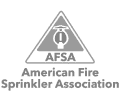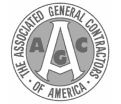What are the Different Parts of a Fire Sprinkler System?
If someone asked you to name a component of your Houston fire sprinkler system, could you do it? Sure, you could say the pump or the sprinkler head, but there’s much more to it than that! Having some knowledge about the different parts of your fire sprinkler system can come in handy, especially when your fire protection services technician gives you the report on your most recent fire sprinkler system inspection. At Kauffman Co, we want to make sure our clients have the most information possible regarding their fire protection systems, because the more you know about your fire sprinkler system, the better it will be able to keep you protected from fires!
Parts of a Fire Sprinkler System
Alarm valve – the alarm valve takes over for the stop valve when the fire sprinkler system activates, controlling the flow of water into the fire sprinkler system. It is a one-way valve, closed when the fire sprinkler heads are closed and open only when the heads are open.
Alarm test valve – the alarm test valve allows you to test your fire sprinkler system at shut-off conditions. This is useful for your weekly fire pump tests, allowing you to run the pump without flooding your facility every time!
Motorized alarm – everyone knows what a fire alarm is. When the fire sprinkler system turns on, the flow of water causes a hammer to strike against a bell, which creates a loud noise that alerts the occupants of your building to danger.
Sprinkler heads – the fire sprinkler heads are one of the only parts of the fire sprinkler system that you see on a daily basis. Fire sprinkler heads are not much more than valves that open in response to high temperatures. One of the nice things about fire sprinkler heads is that they contain the flow of water to just the area where the fire is occurring – unlike in movies where a fire sprinkler floods the office, fire sprinkler heads keep their protection area limited to only where it is needed.
Stop valve – the stop valve is usually red and should always be locked in the open position. The stop valve (appropriately enough) stops the flow of water from coming into the fire sprinkler system from the municipal water supply when the fire sprinkler system is not going off. A separate valve monitor monitors the stop valve to see if it is open or closed (notice the creative naming conventions!).
Other Parts of a Fire Pump
Booster/jockey pump – auxiliary pump used to maintain system pressure without starting the main pump. Jockey pumps are not designed to keep up with full system demand – only pressure maintenance.
City bypass – piping configuration that allows city water to bypass the fire pump and feed the sprinkler system directly. Often used as a backup while the fire pump is under maintenance, during a power outage or in conjunction with an FDC (see below) to make sure some water still gets to the sprinklers.
FDC – stands for Fire Department Connection. The FDC is a connection on the outside of your building that connects to the discharge side of the pump. If the fire pump doesn’t start, the sprinklers can be fed directly by a fire engine’s pump system.
Flow meter loop – piping configuration that allows for system testing without flowing waste water out of the system. A connection on the discharge side of the fire pump routes water through a venture (flow meter) which measures water flow, then circles it back to the suction side of the fire pump to be recirculated into the system.
Flow switch – flow switches monitor the flow of water through different sections of pipe within the automatic fire sprinkler system. If they sense enough water flowing, they trigger the alarm.
Pressure gauge –measures the pressure within the fire sprinkler system. No real surprises there!
Pressure switch –enables the fire sprinkler system to alert the fire department that your fire sprinkler system is going off, and monitors your fire alarm system by watching for a fall in water pressure after the alarm valve.
HOW FIRE SPRINKLERS WORK
You can choose from four different types of fire sprinklers: wet pipe, dry pipe, pre-action, and deluge. The wet pipe version is the most popular, in which the piping holds water at the ready in case a sprinkler head activates.
Dry pipe fire sprinklers are the next most common type. The plumbing in this system contains pressurized air or nitrogen, which pushes out through the sprinkler head before water starts flowing. You might need this type of fire sprinkler system if your building has low temperatures that could cause standing water in a wet pipe system to freeze.
No matter what type of fire sprinklers you choose, keep some important things in mind about how fire sprinklers work:
- Sprinkler heads activate when exposed to high heat, not smoke, minimizing accidental discharge when there isn’t a fire.
- Individual sprinkler heads open one at a time, reducing water damage when extinguishing a fire. In two-thirds of fires where the sprinklers activate, only one or two sprinkler heads are needed to douse the flames completely.
- Having a sprinkler system means your home or business is guarded 24/7. Because of the nearly instant response time, sprinklers put out fires using far less water than the fire department would, again minimizing water damage.
IF ONE SPRINKLER GOES OFF, DO THEY ALL GO OFF?
Perhaps you’ve seen the main character in an action movie make his getaway by lighting a match under a sprinkler and causing a very wet, hotel-wide distraction. Or maybe the latest comedy you watched showed the spouse trying to cook dinner and accidentally setting all the sprinklers off in the house!
Whatever the case, what you’ve seen in the movies, should stay in the movies! Most are relieved to know that the majority of fire sprinkler systems today are triggered by heat, NOT smoke, and they won’t all go off at the same time.
Thankfully, your average fire sprinkler is built with an individual heat detector, which means it has to be triggered on its own, regardless of what is happening with other sprinklers close by. For homeowners everywhere, that means your chances of experiencing a spontaneous indoor rainstorm are rare at best! Instead, your can count on the reliability of fire sprinkler systems to help save your home from a fire
Knowing about the different parts of your fire sprinkler system will come in handy when your fire protection services technician explains the results of your latest fire sprinkler system test. If you want more information about our fire sprinkler inspection services in Houston, Texas, call Kauffman Co today!















